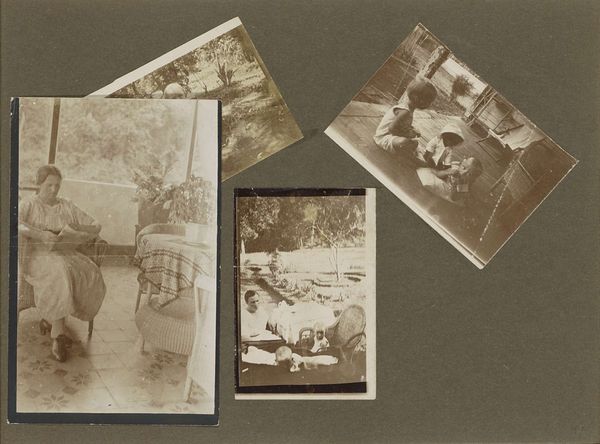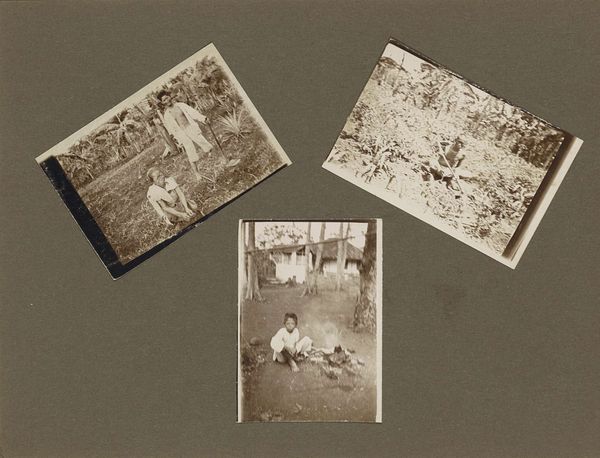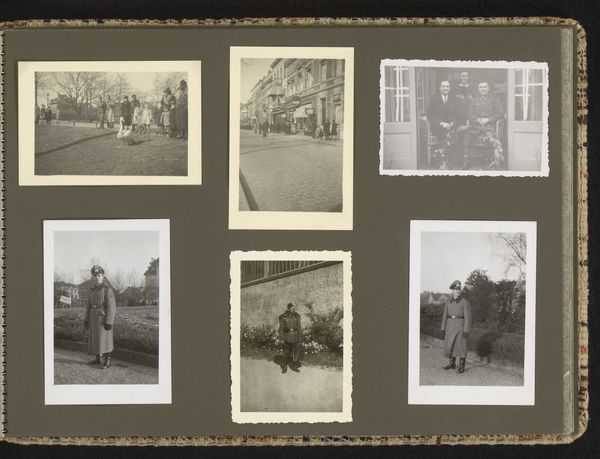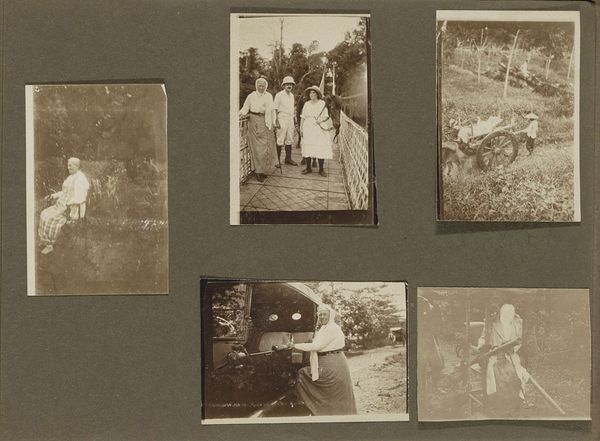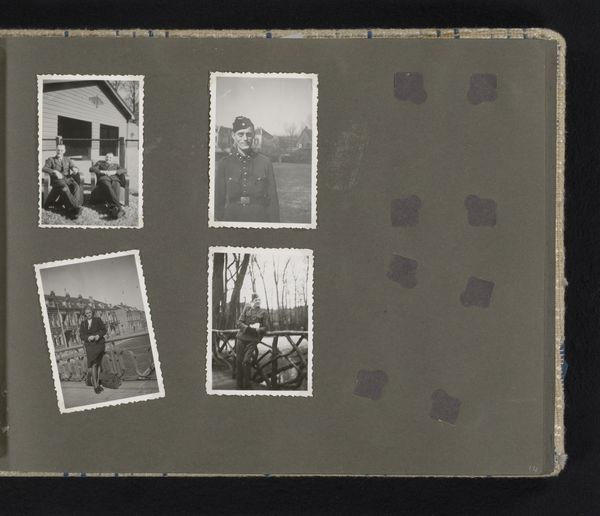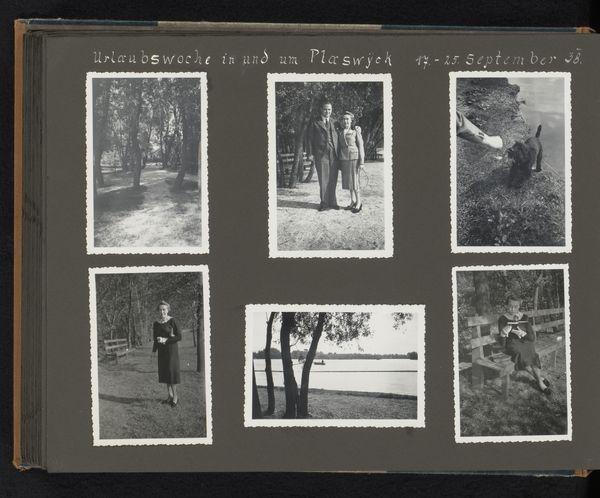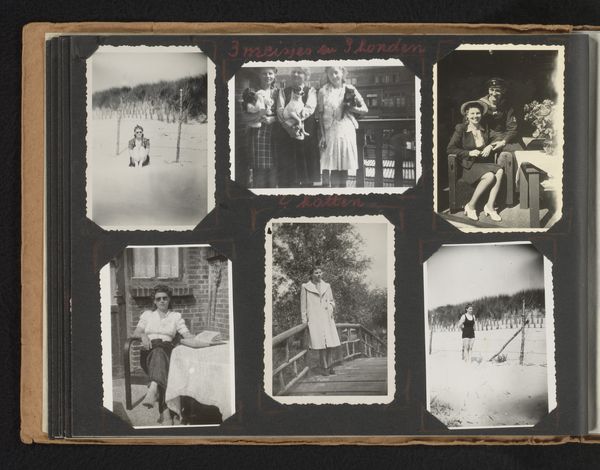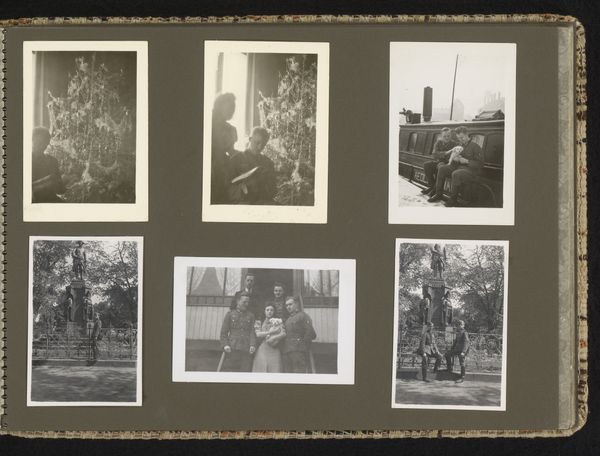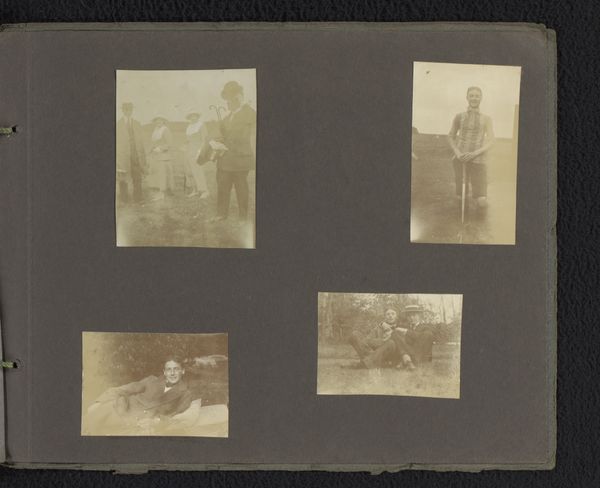
Dimensions: height 290 mm, width 387 mm
Copyright: Rijks Museum: Open Domain
Curator: Before us, we have an intriguing gelatin-silver print entitled "Arnold Palthe en woonhuis in Ommen," a series of images dating circa 1911 to 1919, now residing in the Rijksmuseum's collection. Editor: My first impression is one of intimate domesticity—almost like a series of frozen moments, suspended between documentary and a deeper narrative about familial connection. There's a palpable sense of nostalgia. Curator: Precisely. The photographic layout reveals nine different scenes—from familial portraits to the depiction of garden, architectural views and apiculture, all meticulously captured. Each frame offers a particular glimpse into daily life, yet together they form a cohesive composition. Editor: That’s right—and placing the scenes in conversation brings about a discussion of social status and belonging. The photographs of the family, alternating with images of nature and domestic space, bring to light themes of home, identity and land ownership. The beekeeping photographs are interesting because they bring a perspective about work and agricultural livelihood. Curator: And structurally, observe the play of light and shadow. The way the gelatin-silver print renders the contrasts is exceptional. It uses shadow to carve forms from plain sight and amplify volume in certain forms. Editor: These visual strategies do more than demonstrate technique. In terms of subject matter, there’s something rather traditional—but it's elevated through careful attention to detail in the composition and the processing. By showcasing his private life in such detail, the family becomes less anonymous and is placed within a larger history of wealth. Curator: It becomes a historical marker of bourgeois ideals. I find it fascinating to see such personal history meticulously structured and presented through photography. It invites introspection of how we visually preserve our personal and collective memories today. Editor: Absolutely. Looking at it with an intersectional lens offers profound insights into how family narratives can reinforce socioeconomic privilege, captured with technical artistry during that time. Curator: Agreed, I am convinced by your analysis that there is no family portrait neutral to the dynamics of social hierarchies. Editor: Yes! Perhaps this will remind viewers of what still must be unlearned.
Comments
No comments
Be the first to comment and join the conversation on the ultimate creative platform.


